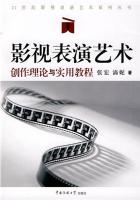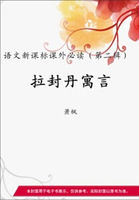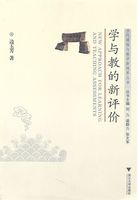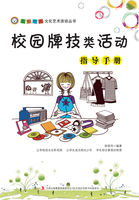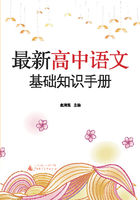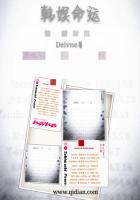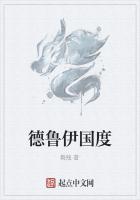e.g. There was an unfortunate family. The father left, leaving the mother and a seven-year old son in a nearly empty house.The mother did not give up, and she placed all her hope on the boy.She could bear all hardships in life, but a low grade the boy got from school.One day, the tired mother saw an exam paper scored 80 on the table.In a fit of madness she beat her son to death, and then killed herself. This tragedy raises a question: Are exam scores so important? I think parents in China should have a correct attitude towards school grades.(这是一则骇人听闻的故事,令人震惊的新闻。作者用这样一个令人匪夷所思的事情来开头,让读者情不自禁地开始思考这样的一个社会问题:这一悲剧发生的焦点在哪里?段落后面作者马上提出要思考的问题,并表明自己的立场,这样有利于抓住读者的心,让读者对于文章的后续有所牵挂,继续进行对整篇文章的阅读。)
4.坦陈争议,提出问题
话题:Should a man put loyalty to his country above loyalty to a friend? Does loyalty to the government come before loyalty to one"s family?(此类问题的提出往往会激发读者的“参与性”,从而使读者投入地读下去,并提出自己的看法)。
5.援引名言警句或谚语口头
名人名言的引用可让读者迅速了解本文的主旨。如话题“Rock Superstars: What Do They Tell Us About Ourselves and Our Society?”的文章的开头即是两句名言:Rock is the music of teenage rebellion.(摇摆乐是青少年反叛的音乐)--John Rockwell
By a man"s heroes we shall know him. (知其崇拜何人,可知其人也)--Robert Penn Warren
Where there is a will, there is a way; No pains, no gains, etc.
6.制造悬念
如话题“Why I Am Glad to Be 40?”文章的开头,一读题目以为这只是一个平凡的人在叙述自己为什么盼望40岁,但是当读了本文开头后,就不会这样想了。
When I was eight I always assumed,I would shoot myself when I got to 40;it seemed obvious to me that nobody older than that could have any fun at all.(这是“我”8岁的观点:人过四十万事休,生不如死(shoot myself)。观点虽荒诞,但出自一孩童,亦可理解。然而,它却在读者的心目中巧妙地设置了一定的悬念,读者,尤其是那些年过40的读者,将会迫不及待地读下去,看看为什么一个小孩会这样认为呢?)
7.用对话引出话题
如话题:Our pursuit of Happiness
开头: “Are you happy?”I asked my brother, Ian, one day. “Yes. No. It depends on what you mean.” He said.
“Then tell me,”I said, “When was the last time you think you were happy?”
“April 1967,”he said.
It served me right for putting a serious question to someone who has joked his way through life. But Ian"s answer reminded me that when we think about happiness,we usually think of something extraordinary, a pinnacle of sheet delight-and house pinnacles seem to get rarer the older we get.(作者与其兄弟的几句对话对读者而言,有一种亲和力,文章就如此平易而自然地切入主题。)
8.为主题下定义或说明其重要性
如话题:Homesickness is a longing to go back to something familiar and dear you have left behind.The longing may be so great that it manifests itself in actual physical illness.Homesickness need not be longing for the family or the home.You can be homesick for an old job or an old friend as well.You can be homesick for anything you have left behind.(作者给Homesickness下定义,解释Homesickness的不同种情况,让读者对Homesickness 有不同的理解)。
写文章是一种创造性的劳动,开头方法依据不同的主题会有不同的类型,作者应根据题目的意思、要求选择合适的方法,尽可能第一时间抓住读者的注意力。当然,无论采用什么方法开篇,除了文学作品外,在开头段,一般应包括文章的中心思想句。
二、文章结尾的写法
好的文章结尾段(concluding paragraph)应能给读者一个完整的概念,留下深刻的印象。如果说开头的成功与否主要在于是否“抓人”,那么,理想的结尾就关系到读者的回味,好的结尾,或者余音袅袅,令人掩卷而思;或提纲挈领,使人了然于心;或慷慨陈词,教人感奋不已;或画龙点睛,让人忍俊不禁。文章依据不同的题材,结尾的方式很多。现介绍如下:
1.归纳、总结式
简要总结、归纳文章的要点,以便深化主题。一个总结性的结尾,文章不但可以回归主题实现一个圆满的结局,还可以帮助读者加深印象。
e.g. In conclusion,it may be wise to take another look at the use of the computer in college writing courses. At first glance the computer offers excitement and a world of promise, but I think there"s a serious question about whether it actually improves students"writing. (在这个总结性的段落中,作者用了第一句话概述了自己的结论。在文章的末尾重新呼吁审视计算机在大学英语课堂的运用,重申了自己对待这一问题的看法,强化了读者对文章论题的印象。但需指出的是,总结不是对主题句或内容进行简单的重复。)
2.建议式
e.g. Brand A has excellent nutrition, but it is too expensive, far beyond the means of the “poor” pupils.Brand C has the highest nutritional rating and a moderate price.Although it is fair in taste, it is not poor after all. Therefore I definitely decide that I will recommend Brand C for use in elementary schools. (该文谈的是小学生食用面包的问题。作为结尾,该段首先阐述了两种品牌面包各自的优缺点。最后以简明的事实为依据,提出合适学生食用的面包。)
3.问题式
可以提问的方式来结束文章,刺激读者对论题进行深入的思考,达到发人深省的效果。问题多为反问句。
e.g. Children of all ages need the love of both parents and the regular contact to continue these relationships. If one parent gives support,acceptance,and unconditional love to the children, wouldn"t be that much better for the childen if they received twice as much the normal amount for children whose parents have not divorced?(文中讨论的是单亲小孩的文章的结尾。单亲家庭是一个严峻的社会问题,很多小孩因得不到父母的爱未能健康成长。事实上,无论处于什么年龄段,父母亲的爱对小孩来讲都很重要。文章结尾用了一个反问句,答案不言而喻)。
4.格言式
用格言、谚语或习语来总结全文,既言简意赅又有更强的说服力。
e.g. (1) If you have anything to do, try to do it yourself, for that is the safest way to permanent success. Remember the famous saying. “God helps those who help themselves.”
(2) Years ago, a great philosopher Francis Bacon remarked that “Knowledge is setting, Knowledge is change”-and accelerating knowledge acquisition, fueling the great engine for technology, means accelerating change.
5.号召式
用号召结尾,可以增强文章的感染力,使读者在结尾处更深入地融入所写文章的主题与氛围中。
e.g. The communists disdain to conceal their views and they openly declare that their ends can be attained only by the forcible overthrow of all existing social conditions. Let the ruling classes tremble at a communist revolution. The proletarians have nothing to lose but their chains. They have a world to win. Working men of all countries, unite! (这个结尾段是不是点燃了大家投身于我们伟大的社会主义建设的革命激情呢?)
6.展望(或期望)式
表示对某一事物怀着美好的期待,并呼吁更多的读者投入主题行动。
e.g. I am sure Chinese will become one of the most important languages in the world in the next century. As China will open further to the outside world the language is sure to be spread world widely.
7.呼应开头
可以在文章结尾呼应开头,不但在结构上可以凸显文章的整体观,还在内容上重复文章的主题,加深读者对文章主题的印象。
如话题:How Emotions Rule Our Health
Opening: Medical investigators have demonstrated that emotional upset triggers a chain of events involving the brain and the endocrine system. Severe over-stimulation may have physical effects leading to disease.

